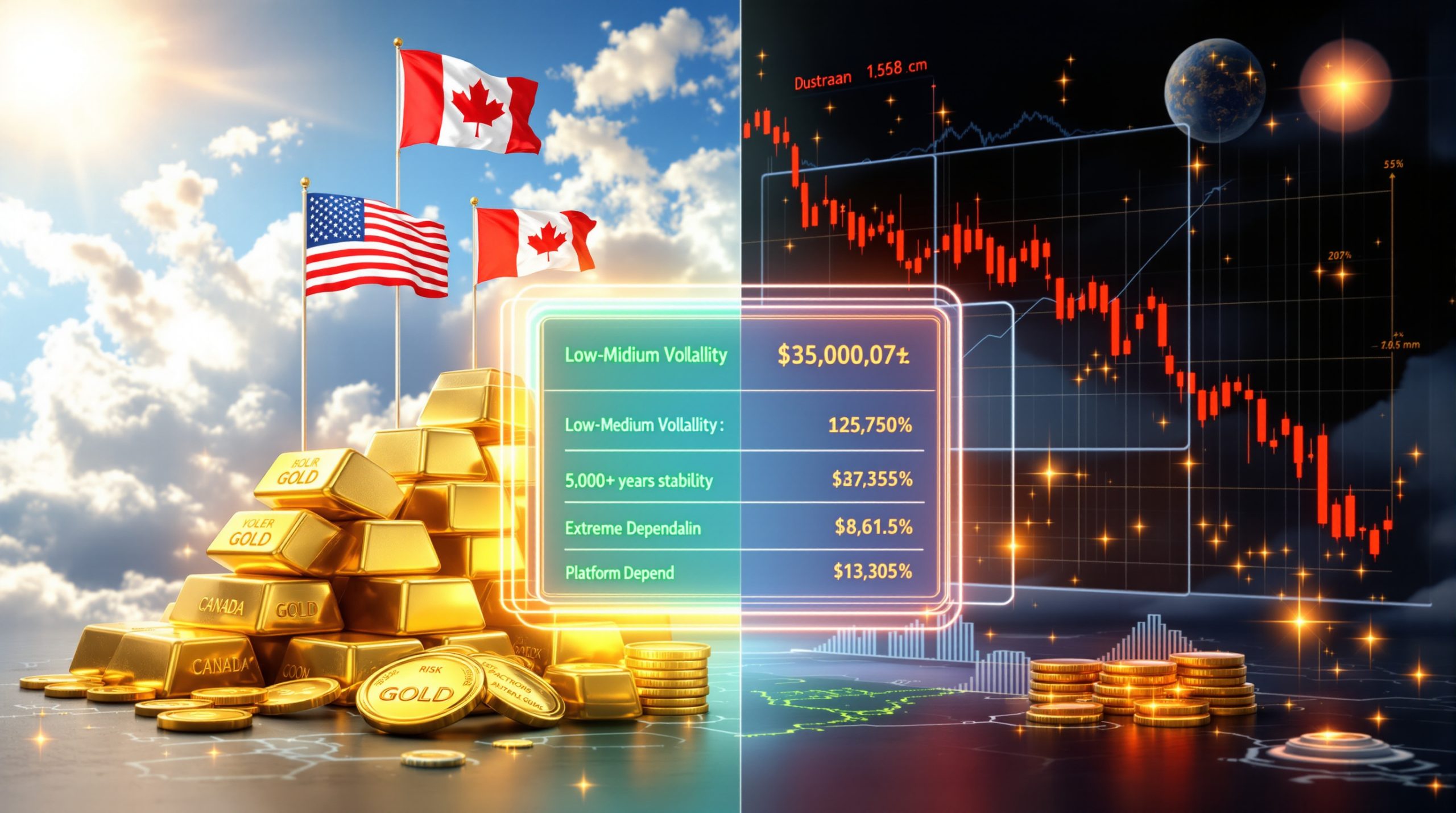The Most Overvalued and Concentrated Equity Bubble in History: Understanding Market Risks
The U.S. stock market and the broader economy are increasingly diverging paths. While the S&P 500 continues reaching new heights—recently trading around 6,400 points—the real economy shows troubling signs of weakness. This growing disconnect raises critical questions about market sustainability and the potential risks facing investors in what many analysts are calling the most overvalued and most concentrated equity bubble in history.
The Scale of Market Overvaluation
Current market metrics reveal unprecedented levels of overvaluation. As Michael Pento of Pento Portfolio Strategies notes, "The market cap of equities is now over twice the level of GDP. That's something that hardly ever happens in history… you look at the average, it's around 100%. A little bit less than that."
The numbers tell a concerning story:
- Market capitalization of equities now exceeds twice the level of GDP (over 200%)
- Historical average market cap-to-GDP ratio typically hovers around 100%
- Warren Buffett's favorite indicator (total market cap to GDP) stands at 209%
- Previous market peaks before major corrections:
- Dot-com bubble: 140% (before NASDAQ lost 80%)
- Global Financial Crisis: 104% (before S&P lost 50%)
This extreme overvaluation suggests we're in uncharted territory, with current levels far exceeding previous bubble peaks. Additionally, tariffs impact markets and can create further instability in already overvalued environments.
Concentration in Mega-Cap Stocks
The current market structure shows dangerous levels of concentration:
- Top 10 stocks now represent approximately 40% of the S&P 500's market cap
- This concentration exceeds levels seen in previous market bubbles
- Market performance increasingly dependent on a handful of technology giants
- Broader market weakness masked by outperformance of largest companies
When such a small number of companies drive most market returns, it creates a precarious situation where overall index performance may not reflect the health of the broader market or economy.
How Did We Reach This Precarious Position?
The Role of Artificially Low Interest Rates
The current market bubble has been fueled by decades of monetary policy decisions. As Pento explains, "We've had decades of falsified interest rates where real interest rates have been negative for most of the past 20 years. And that's also something has never happened before."
This unprecedented monetary environment has created several distortions:
- Real interest rates have been negative for most of the past 20 years
- This unprecedented period of artificially low rates encouraged excessive risk-taking
- Investors pushed into equities seeking returns unavailable in fixed income
- Corporate borrowing at low rates fueled stock buybacks, boosting share prices
- Current earnings yield on stocks has turned negative, meaning risk premiums are negative
- Dividend yield on stocks at record low or very close to it
When money is essentially free to borrow, it distorts natural market mechanisms and encourages speculation rather than productive investment. According to research from Hussman Funds, this environment has created one of the most extreme misallocations of capital in market history.
The Triple Bubble Phenomenon
Unlike previous market cycles, today's environment features three concurrent bubbles:
- Equity market bubble (stocks trading at extreme valuations)
- Credit market bubble (excessive corporate and government debt)
- Real estate bubble (housing prices detached from affordability metrics)
This "triumpvirate of bubbles," as Pento calls it, creates systemic risks that exceed those of any single asset class bubble. When multiple asset classes are simultaneously overvalued, there are fewer safe havens during market corrections.
What Warning Signs Are Flashing in the Economy?
Deteriorating Labor Market Conditions
Recent economic data points to significant labor market weakness:
- Job growth consistently falling below expectations
- Substantial downward revisions to previous employment reports (May and June numbers revised down significantly)
- Average monthly job revision under current administration: 77,000 jobs reduced
- Rising continuing jobless claims (highest since late 2021)
- Shrinking labor force participation according to household survey data
- Current labor market conditions represent the weakest in 15 years
These employment trends suggest the economy may be weaker than headline numbers initially indicate, with subsequent revisions revealing a more concerning picture. The combination of US debt and inflation creates additional pressures on both consumers and markets.
The Middle Class Squeeze
Economic pressures are creating severe strain on household finances:
- Approximately 60% of Americans have little to no net worth or negative net worth
- Persistent inflation eroding purchasing power
- Housing affordability at crisis levels
- Growing wealth inequality as asset inflation benefits primarily the top quintile
As Pento notes, "We have a situation in the United States now where 60% of the population has either no net worth or negative net worth. Little to no net worth or negative net worth. 60%. And that's because of the inflation which is directly laid at the feet at our government."
This economic bifurcation means many Americans are experiencing recessionary conditions despite overall GDP growth, creating social and political tensions alongside economic fragility.
How Fragile Is the Current Market Structure?
The Liberation Day Tariff Example
Market reaction to policy announcements reveals underlying fragility. A recent episode provides a troubling glimpse into market vulnerability:
- Between April 2nd and April 9th, 2024, markets dropped 15% on tariff announcements
- S&P 500 fell to approximately 4,800 points during this period
- Credit markets began freezing in response to policy uncertainty
- Quick reversal of policy stance was required to stabilize markets
As Pento describes, "Between April 2nd and April 9th happened because so April 2nd was the announcement of liberation day tariffs and April 9th was the effective date and between then the market lost the S&P lost 15%… it just goes to underscore and illustrate very clearly how fragile this bubble is."
This rapid market decline over a relatively minor policy change demonstrates how quickly sentiment can shift when valuations are extreme and highlights why many experts consider this the most overvalued and most concentrated equity bubble in history.
The Quiescence in Credit Spreads
Current market conditions show concerning signs of complacency:
- Credit spreads remain unusually tight despite economic warning signs
- Financial conditions remain loose despite inflation concerns
- Investors appear to be ignoring mounting economic risks
- Similar patterns of market complacency preceded previous major corrections
This apparent complacency may indicate investors are overlooking fundamental risks, setting the stage for a potentially dramatic shift in sentiment when reality catches up with perception.
What Could Trigger a Market Correction?
The Interest Rate Dilemma
The Federal Reserve faces difficult policy choices that could destabilize markets:
- Cutting rates while inflation remains above target risks further inflation
- Inflation has been above the Fed's target for 50 consecutive months
- Long-end bond yields could spike if markets lose confidence in Fed policy
- Fed cut rates 100 basis points in 2024 while long end rejected the cuts
- Operation Twist or similar interventions would require massive balance sheet expansion
- Dollar weakness could accelerate if monetary policy loses credibility
Pento expresses concern: "My fear is that once all these things come in place and you have a central bank that's slashing interest rates on the short end when inflation has been above the Fed's target for 50 months in a row and it's rising further away from that target and then you slash interest rates in the context of $2 trillion deficits."
This policy dilemma places the Fed in a difficult position, with no easy options to maintain stability.
The Government Debt Problem
Fiscal challenges create additional market vulnerabilities:
- Annual deficits approaching $2 trillion
- Projections suggest adding $30 trillion to national debt in next decade, reaching $67 trillion total
- Foreign buyers reducing Treasury purchases
- Domestic investors may demand higher yields to compensate for risks
The combination of slowing economic growth and escalating debt servicing costs creates a potential fiscal crisis that could spill over into equity markets. As detailed in AFR's analysis, these fiscal imbalances represent a significant threat to market stability.
Market Liquidity Concerns
Modern market structure creates additional risks during periods of stress:
- Electronic trading can lead to sudden liquidity disappearance
- Circuit breakers may be triggered (7.5% down closes market for an hour, 13% for the day)
- Passive investment vehicles could face redemption challenges
- Market makers may step away during periods of extreme volatility
These structural vulnerabilities could amplify market declines once they begin, creating cascading effects that overwhelm normal stabilizing mechanisms.
How Significant Could a Market Correction Be?
Historical Precedents for Major Corrections
Previous market bubbles provide context for potential downside:
- Dot-com crash (2000-2002): NASDAQ fell 80%, S&P 500 fell 50% from market cap-to-GDP ratio of 140%
- Global Financial Crisis (2007-2009): S&P 500 fell approximately 57% from market cap-to-GDP ratio of 104%
- Current valuations far exceed those seen before either of these corrections at 209% market cap-to-GDP
The historical pattern suggests that more extreme valuations tend to lead to more severe corrections when market sentiment shifts. During such corrections, gold safe haven assets typically outperform as investors seek protection.
The Mean Reversion Principle
Mathematical realities suggest significant potential downside. As Pento states, "The market to reach fair value needs to drop by 50%. That's just fact. If you believe in reversion to the mean history tells me that reversion to the mean always works… either the stock market goes nowhere for a decade and GDP and incomes catch up or it crashes."
This mean reversion could play out in two ways:
- Sharp correction: Markets drop approximately 50% to reach historical fair value
- Extended stagnation: Market moves sideways for a decade while economy catches up
- Either outcome represents poor prospects for passive index investors at current valuations
Mean reversion is one of the most reliable patterns in financial markets, suggesting today's extreme valuations will eventually normalize one way or another.
How Should Investors Position Their Portfolios?
The Case for Fixed Income
Bond markets offer potential opportunities in the current environment:
- Short to intermediate-term Treasuries (1-3 year) provide attractive yields
- Potential for capital appreciation if economic weakness leads to rate cuts
- Less volatility than equities during market corrections
- Provides liquidity for potential equity purchases after market reset
Pento recommends 1-3 year Treasury bonds for duration exposure while avoiding long-end risk, with a strategy of profiting from anticipated Fed rate cuts to 3% from the current 4.25-4.5% range.
The Appeal of Hard Assets
Physical assets may provide protection against monetary debasement:
- Gold has outperformed the S&P 500 with less volatility since 2000
- Precious metals historically perform well during periods of financial instability
- Hard assets cannot be created or printed unlike fiat currencies
- Platinum offers similar benefits with greater rarity than gold
"If you don't own any gold, you just made a big mistake," Pento argues. "I mean, it's outperformed the S&P 500 with less volatility since the year 2000… a quarter of a century, gold has outperformed the S&P 500."
In an environment of currency debasement and financial instability, hard assets have historically provided a store of value that paper assets cannot match.
The Importance of Active Management
Current market conditions demand vigilant portfolio oversight:
- Passive buy-and-hold strategies face significant risks
- Ability to adjust positioning based on changing conditions critical
- Understanding the inflation/deflation economic cycle
- Flexibility to implement defensive positioning when needed
The unusual market concentration and extreme valuations of the most overvalued and most concentrated equity bubble in history suggest this is not an environment where passive investing strategies are likely to succeed. Implementing proper diversification strategies becomes increasingly important during such periods.
What Potential Scenarios Could Unfold?
Scenario 1: Stagflation
A combination of stagnant growth and persistent inflation:
- Central bank caught between fighting inflation and supporting growth
- Hard assets likely to outperform financial assets
- Fixed income would face challenges from inflation pressure
- Equity valuations would compress due to higher discount rates
This scenario becomes increasingly likely if the Fed cuts rates while inflation remains persistent, potentially leading to currency weakness and higher input costs.
Scenario 2: Deflationary Recession
Economic contraction with falling prices:
- High-quality bonds would likely perform well
- Equities would face significant pressure from earnings contraction
- Cash and short-term Treasuries would preserve purchasing power
- Opportunities would emerge for long-term investors after reset
As Pento warns, "The real problem is going to be either a recession or a credit crisis. That's where you're going to lose a lot of your money."
This scenario could unfold if credit markets seize up or consumer spending contracts sharply, leading to a deflationary spiral.
Scenario 3: Managed Decline
Attempt to engineer a "soft landing" through policy intervention:
- Central bank slashes rates while implementing yield curve control
- Massive expansion of balance sheet to support asset prices
- Short-term stability at cost of longer-term structural problems
- Currency debasement leads to inflation in necessities
This scenario might appear successful initially but could lead to more severe problems later as economic imbalances compound rather than resolve. However, it may create new investment opportunities for those positioned appropriately.
FAQ: Key Questions About Market Risks
Are We Currently in a Recession?
The answer depends largely on economic position:
- Bottom 80% of Americans have experienced recessionary conditions
- Top 20% continue to benefit from asset inflation
- Official recession metrics may not capture this bifurcated reality
- Leading indicators suggest broader economic weakness ahead
This economic divergence explains why many Americans feel they're in a recession despite headline GDP growth that suggests otherwise.
Why Has the Market Recovered So Quickly From Recent Pullbacks?
Several factors have contributed to market resilience:
- Policy reversals when markets show weakness
- Concentrated buying in largest index components
- Retail investor participation remains strong
- Perception that central bank will intervene to prevent major declines
This "Fed put" mentality has created moral hazard, encouraging excessive risk-taking based on the assumption that policymakers will always prevent significant market declines.
What Makes This Market Bubble Different From Previous Ones?
The current market environment has unique characteristics:
- Unprecedented concentration in handful of stocks
- Concurrent bubbles across multiple asset classes
- Extreme government debt levels limiting policy options
- Global nature of monetary policy coordination
These factors combine to create systemic risks that exceed those seen in previous market cycles.
How Does AI Factor Into Current Market Valuations?
Artificial intelligence represents both opportunity and valuation risk:
- Genuine productivity potential from AI implementation
- Similar productivity claims made during dot-com era
- Current valuations price in decades of flawless execution
- Market may be overestimating near-term economic impact
While AI represents a genuine technological advancement, the market appears to be pricing in perfect execution and maximum benefit, leaving little room for disappointment.
Disclaimer: This article contains general investment information and should not be construed as personalized investment advice. The opinions expressed are based on current market conditions which can change rapidly. All investments involve risk including the loss of principal. Past performance does not guarantee future results. Consult with a qualified financial advisor before making significant investment decisions.
Want to Identify the Next Major Mining Discovery?
Discovery Alert's proprietary Discovery IQ model delivers instant notifications when significant ASX mineral discoveries are announced, helping you capitalise on market-moving opportunities before the broader market reacts. Explore how historic discoveries have generated substantial returns by visiting Discovery Alert's dedicated discoveries page.




